BLOG ARTICLE
Optimize Your Maintenance Budget
Leveraging CMMS for effective Maintenance spending
Ever feel lost in a maze of maintenance bills? You're not alone. Balancing the need for well-maintained equipment with keeping costs under control can be a constant challenge.
But what if there is a tool to help you navigate this maze and emerge with a clear understanding of your maintenance spending? Enter the CMMS (Computerized Maintenance Management System) – your guide to smarter maintenance decisions.
Shining a Light on Spending:
While a CMMS doesn't magically display a "total maintenance cost" figure, it acts as a powerful flashlight, illuminating the data you need for calculation. It tracks details like:
But wait, there's more! To get the complete picture, you'll need some additional information:
Equipped with this data, you can use this formula to estimate your total maintenance cost:
Total Maintenance Cost = Labor Costs + Parts & Materials Costs + Contractor Costs (if applicable)
Benchmarking Your Spending:
Now that you have a clearer picture of your spending, how does it compare to the norm? Here's where CMMS becomes even more valuable:
But what if there is a tool to help you navigate this maze and emerge with a clear understanding of your maintenance spending? Enter the CMMS (Computerized Maintenance Management System) – your guide to smarter maintenance decisions.
Shining a Light on Spending:
While a CMMS doesn't magically display a "total maintenance cost" figure, it acts as a powerful flashlight, illuminating the data you need for calculation. It tracks details like:
- Labor Hours: The time technicians spend on work orders, providing a foundation for labor cost calculations.
- Parts & Materials: Records of parts used for repairs and preventive maintenance, helping estimate associated costs.
- Contractor Costs (if applicable): Tracks expenses incurred for outsourced maintenance services.
But wait, there's more! To get the complete picture, you'll need some additional information:
- Labor Rates: Hourly wages and benefits for your maintenance personnel.
- Parts & Materials Costs: Prices of the specific parts and materials used in maintenance (obtained from invoices or purchasing records).
Equipped with this data, you can use this formula to estimate your total maintenance cost:
Total Maintenance Cost = Labor Costs + Parts & Materials Costs + Contractor Costs (if applicable)
Benchmarking Your Spending:
Now that you have a clearer picture of your spending, how does it compare to the norm? Here's where CMMS becomes even more valuable:
- Industry Benchmarks: Research average maintenance costs for your industry based on the number and type of assets you manage. This provides a valuable external reference point.
- Historical Data: Compare your current spending to your maintenance costs in previous years, considering any changes in the number or age of your assets. This helps identify trends and potential areas for improvement.
High Maintenance Spending?
Time to Fix the Leaks.
If your spending seems excessive, the CMMS can help
pinpoint the culprits.
If your spending seems excessive, the CMMS can help
pinpoint the culprits.
- Analyze Work Orders: Drill down into work order details to identify unnecessary tasks, excessive parts usage, or recurring repairs for the same issues. Streamline processes and ensure parts are used judiciously.
- Equipment-Specific Costs: Analyze maintenance costs by equipment. Are certain assets draining your budget? Prioritize preventive maintenance for critical assets or consider cost-effective replacements for chronically problematic equipment.
- Labor Efficiency: Use CMMS data on work order completion times to assess labor efficiency. Consider training opportunities or streamlining work processes to improve technician productivity.
Low Maintenance Spending ?
A Double-Edged Sword.
While lower spending might seem like a win, be cautious. Neglecting necessary maintenance can have hidden costs.
While lower spending might seem like a win, be cautious. Neglecting necessary maintenance can have hidden costs.
- Breakdown Blues: Deferring maintenance increases the risk of unexpected equipment failures. This translates to costly downtime, lost production, and potential safety hazards.
- Repair Rollercoaster: Minor issues left unattended can snowball into major problems requiring expensive repairs later.
- Shorter Asset Lifespan: Lack of proper maintenance can shorten the lifespan of your equipment, necessitating earlier replacements, further impacting your bottom line.
Finding the Maintenance
Sweet Spot
Sweet Spot
The ideal scenario is to find a balance between overspending and under-maintaining your assets.
A well-designed PM program through
AI powered Bolt CMMS can prevent breakdowns, minimize reactive repairs, and ultimately reduce overall maintenance costs.
A well-designed PM program through
AI powered Bolt CMMS can prevent breakdowns, minimize reactive repairs, and ultimately reduce overall maintenance costs.
